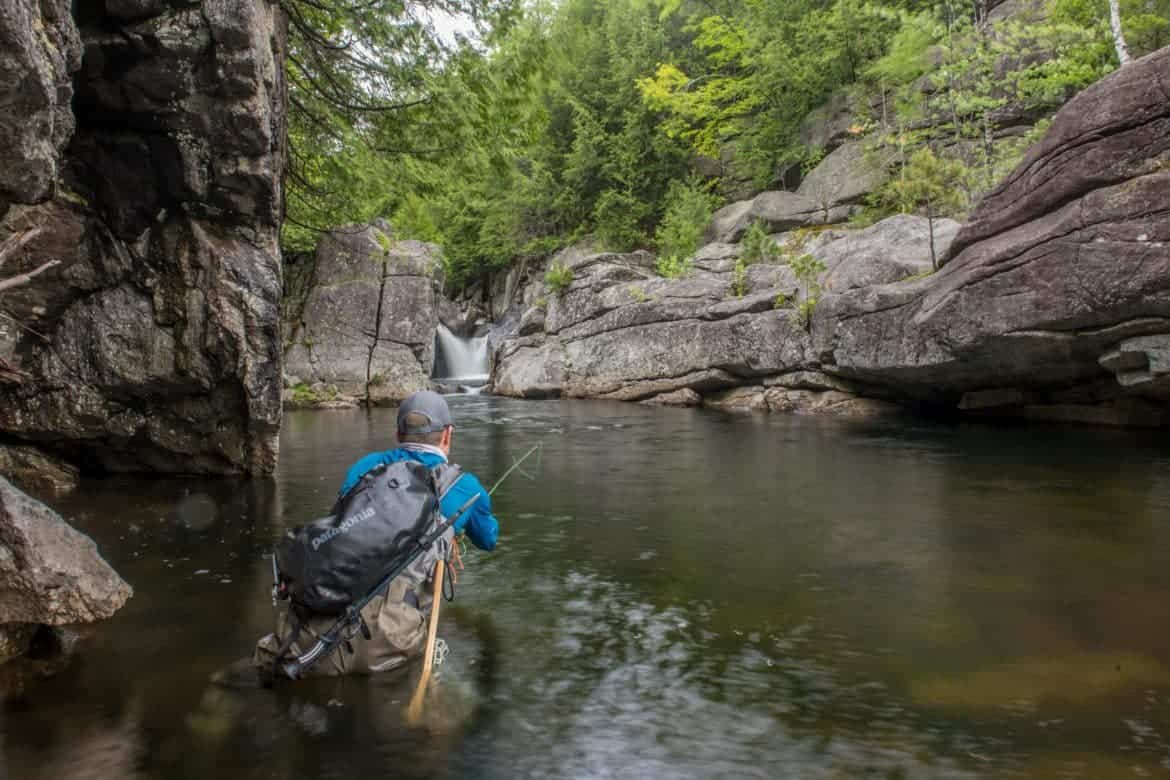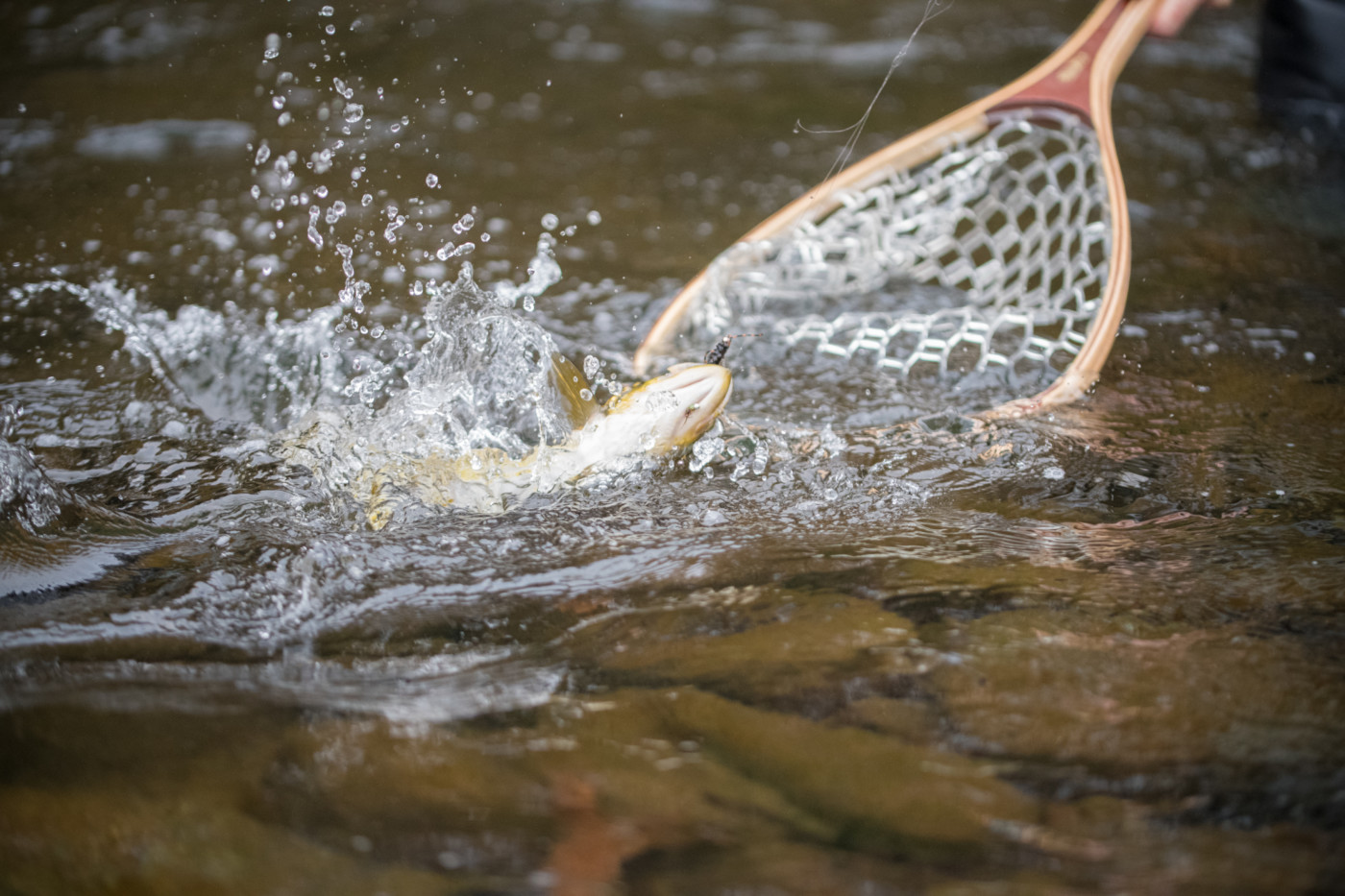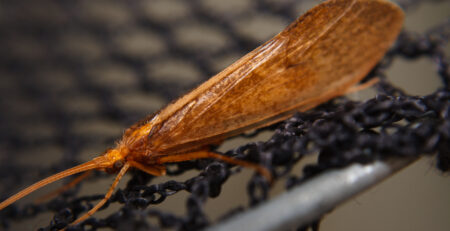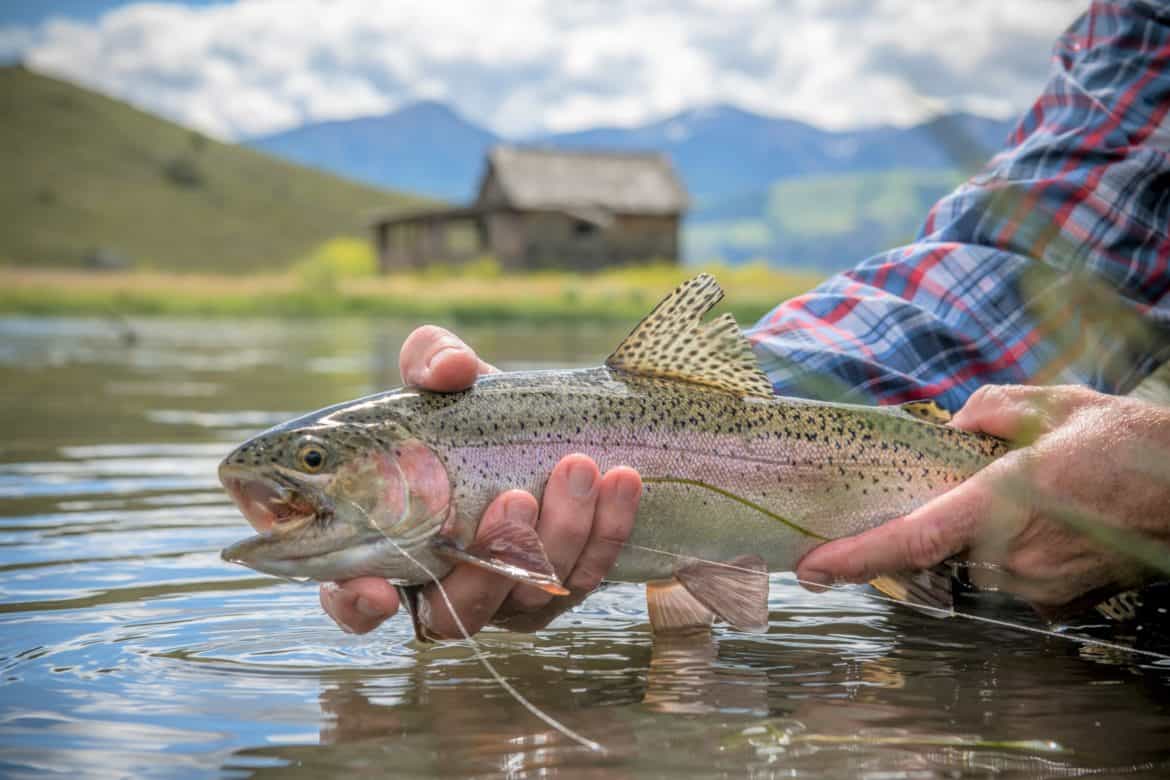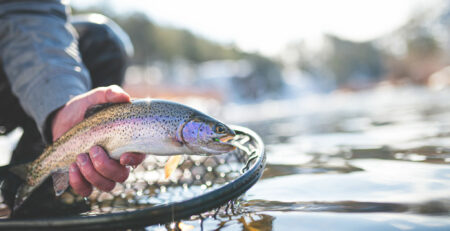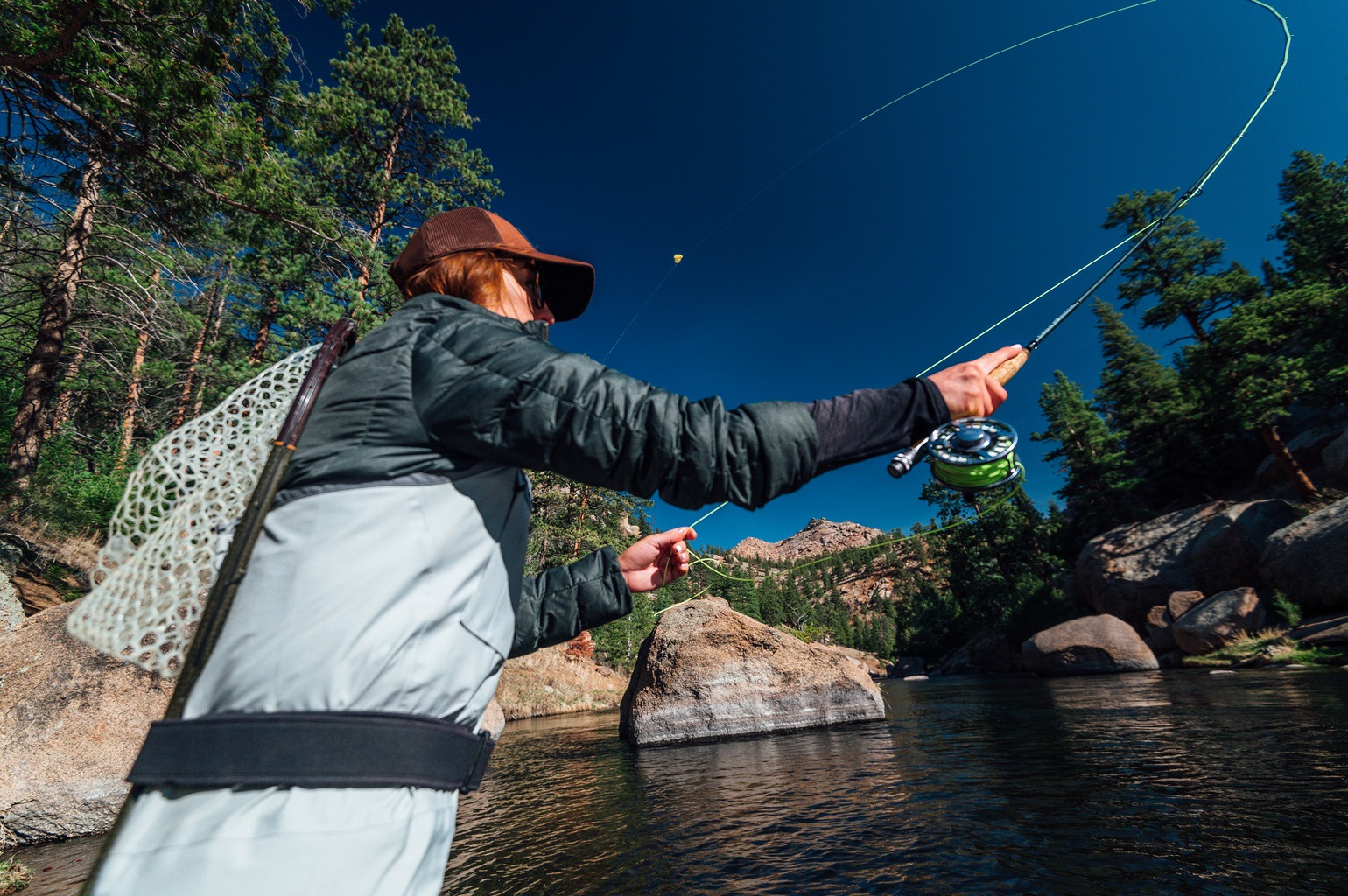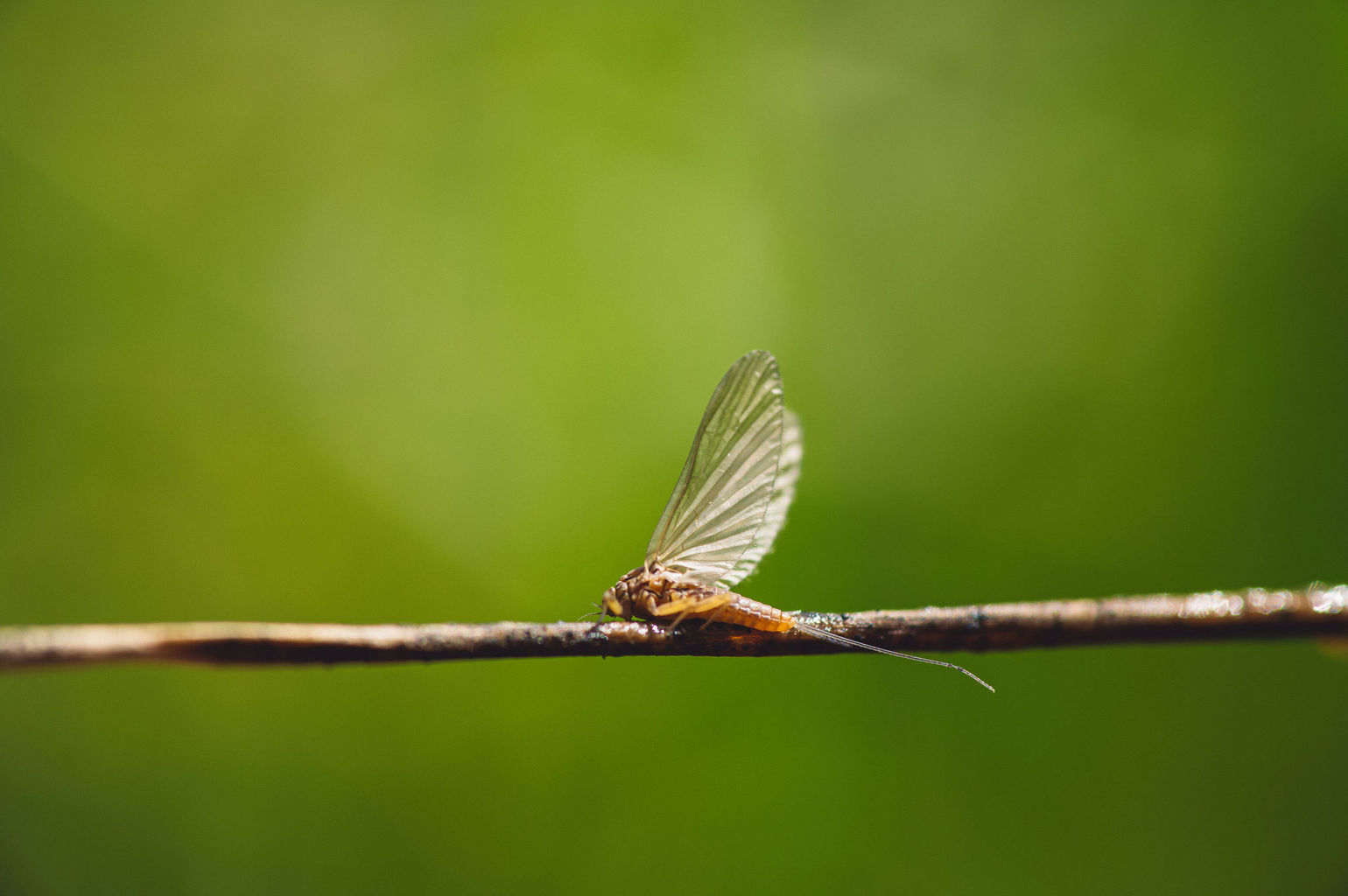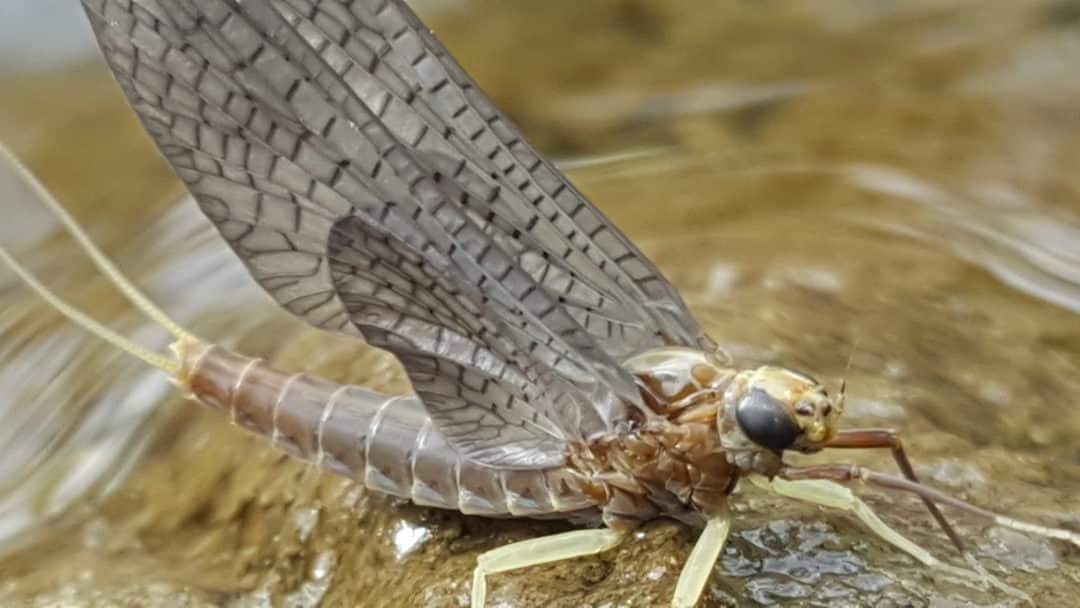Strategies You Haven’t Considered While Fly Fishing For Trout
Fishing Streams After A Rain
There are always tactics and techniques to catching fish in nearly every situation, and fly fishing high, muddy streams after a rain is no different. In these high water conditions fish will seek refuge in slack water and along the banks. Don’t expect to catch fish by casting into the class 6 white water rapids that developed mid-stream. Fish along the banks, behind large structure, and flooded areas deep enough to hold fish. I’ve caught many decent fish from following these tips.
Fish won’t be looking up to dry flies and can almost guarantee few insects will be hatching. Your best bet is to dead drift your flies down to the fish with weighted flies like nymphs and streamers.
Another perk to fishing in these undesirable conditions is that people will avoid fishing during these times and you will have the whole stream to yourself.
Just don’t go out wading into the water. Stay safe, be careful, and fish from the bank.
Beaded Dry Flies
It’s totally natural for insects to get churned under the surface. These drowned insects are easy meals and fish aren’t afraid to snack on them. This happens frequently during and after a spinner fall. Dead spinners get pushed down, and rather than feed off the top trout take the easy meals drifting on by. You’ll know that this is happening when you see disturbances on the water but nothing breaking the surface. Using dry flies with small beads will place your fly just a few inches below the surface and right into the mouths of feeding trout.
Double Dry Fly Rig
Think of a double dry fly rig as using a strike indicator for your dry flies. It’s not that you’ll see your second fly drop below the surface like when nymphing, it’s that you will use that second fly as a sighter to spot your other dry fly. This can be advantageous when fishing tiny dry flies or emergers. Tiny flies are tough to see over the glare and are just hard to see in general. By using a larger or more visible fly in the double rig with help you focus in on the other.
Fly Fishing Made Easy 👍
Our Quarterly Fly Club ships 1,000’s of flies to anglers all across the United States. Receive curated fly assortments selected for the season with in-depth articles on how to fish them. Great for beginners to learn and for intermediates to discover new flies.
Tiny Dry Fly In Your Nymphing Rig
A good friend of mine absolutely loves to put a tiny size #22 – #24 dry fly into his nymphing rigs, and for whatever reason it works. Having the tiny dry fly pulled down into the feeding lanes drives trout nuts. I guess they could see it as a drowned insect or even an emerging larva, but it just plain works.
Skating Your Dry Fly
Have you ever watched caddis flies or stoneflies depositing their eggs across the surface of the water? They flap their wings to purpell them across the water like they’re skating. What better way to imitate their natural behavior than to skate your dry fly across the water than an orthodox dead drift. In some cases, picky trout almost prefer chasing the skating fly over a natural drift. The great thing is, is that the skate is easy to incorporate into your fishing. What I’ve seen skilled anglers do is complete their dead drift with the dry fly, like usual, and then raise their rod to skate it while directing the fly across the pool with the rod.
Loose The Indicator
Indicators are a gift and a curse. Sometimes they can put a little drag on your flies — just enough to put off a fish, especially in slow water. What we love to do is take off the indicator and either sight fish or long-distance tightline nymph the flies. What that means is we had little to no slack in the line at all. You can cast upstream, cross stream, or downstream just make sure you have total control over the line and can feel every rock or twitch.
Dead Drift Streamers
Dead minnows and little baitfish are a common sight in the streams. This makes it only natural to dead drift your streamers like a nymph. Trout are always up for an easy meal and often feed opportunistically.
Add Two Split Shots
If you haven’t tried adding split shots into your nymphing rigs, here’s why. Now, here’s why you should be adding two split shots. One split shot is prone to a tremendous number of snags in rocky streams. Adding just one more split shot a few inches above the other gives the two weights a rolling action. So instead of just one split shot getting wedged in between rocks, two split shots push and pull each other out of snags and around obstacles. Now the trick is to add the right amount of weight. Rather than one big split shot, split the difference equally into two.
Multiple Non-Weighted Nymphs
Trout commonly feed right below the surface. Getting to those depths is easy, but having your flies remain in that water column is more difficult. One of the best ways to fish a consistent depth in the water column is to use non-weighted nymphs. Non-weighted nymphs require a bit of technique, though. You’ll have to cast further upstream and give the flies more time to sink to your desired depth before they reach the area you wanted to fish.

